- Home
- Arthur Conan Doyle
The Complete Sherlock Holmes, Volume I (Barnes & Noble Classics Series) Page 5
The Complete Sherlock Holmes, Volume I (Barnes & Noble Classics Series) Read online
Page 5
Although on the simplest plot level, Holmes and Moriarty exist as two separate figures, on another level we are invited to see them as two sides of a single coin, like Milton’s “knowledge of good and evil,” “two twins cleaving together, leap[ing] into the world” or, in this case, out of this world. Europe’s greatest detective and its greatest criminal locked arm in arm, tumbling together into eternity over a vast abyss, form as powerful an image of the mysterious duality of good and evil as the framework of these stories allows. It recalls the structure of Shakespearean tragedy, where the expulsion of evil always requires the sacrifice of some human good.
It is probably impossible today to gauge the effect this final scene had on readers. Now every reader knows that Holmes did not meet his end at Reichenbach Falls, if only because of the huge number of pages still to read after “The Final Problem.” Even if we were momentarily deluded, we would soon find out that Mr. Sherlock Holmes returned from Switzerland, resumed his crime-fighting career, and finally retired to a country farm in Sussex, where he tended bees. This sheds a completely different light over our feelings for him. Instead of a tragic hero whose final sacrifice redeemed his society, he has faded into what Conan Doyle called in the Preface to The Case Book of Sherlock Holmes that “fairy kingdom of romance,” existing forever in the secure confines of an impossibly safe world.
At the time, Holmes’s death made an enormous impact on the reading public. Bank clerks and shopkeepers wore black armbands in mourning for the late consulting detective, and storms of letters poured into the Strand and to Conan Doyle himself, urging the resurrection of Sherlock Holmes. Conan Doyle writes of one woman who sent him a letter beginning “You brute!” But Conan Doyle was adamant in his refusal even to consider taking up his pen to revive his fallen hero.
So from 1893 until 1901 the reading public had to accept the idea that they had read the last of the remarkable sleuth. But then a young friend of Conan Doyle named Fletcher Robinson told him about an old legend from Dartmoor in England’s West Country, near Robinson’s boyhood home. The tale involved a spectral hound that haunted one of the local families. Conan Doyle and Robinson hatched out a plot together, which Conan Doyle then turned into a book. He saw right away that to solve the mystery at the heart of this legend, he would need to revive Sherlock Holmes. He wrote letters to his mother telling her he was writing “a real creeper” in which “Holmes is at his very best.” So in August 1901 the Strand printed the first installment of The Hound of the Baskervilles. Much advertised in advance, that issue of the magazine sold 30,000 extra copies. People lined up for blocks around the printer’s building on Southampton Street in order to get their copy of the magazine before it was shipped to their local newsstand or bookstore.
They weren’t disappointed, and few readers since have been either. The Hound of the Baskervilles is to my mind the best of all the Holmes stories. Most readers will agree with Conan Doyle that Holmes is at his best here. Watson, too, was never better: He acquits himself well in all the tasks Holmes gives him, even to the point of getting Holmes’s unqualified approval. The minor characters are for the most part well drawn, and the plot is skillfully paced. Conan Doyle wonderfully sustained a mood of danger and dread that hangs over the story until the very end. He also created perhaps the most dramatic line in all the Holmes stories. What reader hasn’t felt a tingle along the spine upon reading Dr. Mortimer’s hushed confession: “Mr. Holmes, they were the footprints of a gigantic hound!” When first published in the Strand, that line ended one of the monthly installments. Readers had a whole month to savor the salutary thrill of that horror. I imagine thousands of them reading the line over and over, recapturing that pleasurable shudder before they bought the next chapter the following month. I confess to indulging in that guilty pleasure myself.
Most impressive of all is the masterful way in which Conan Doyle uses language to create symbols that reverberate throughout the novel. The short stories provide little opportunity for any sort of symbolic development, and nothing in either of the two earlier novels could be said to rise to any symbolic level. But The Hound of the Baskervilles contains several symbols. The hound is as much a symbol of an implacable force that punishes human sins as it is a flesh-and-blood creature. As a character in the Baskerville legend, the hound is an instrument for retributive justice, haunting only the heirs of Hugo Baskerville, but as symbol it extends its baleful sphere to all of us. Like Moby Dick, it’s a reminder of an evil that lies at the center of existence, with which humans must eternally wrestle.
The story also makes the moor a character in itself, having as much effect on the action as any of the living beings. Exactly what it symbolizes isn’t easy to say, as it’s in the nature of symbols to defy easy summary, but Stapleton gives an indication. “You cannot think the wonderful secrets which it contains. It is so vast, and so barren, and so mysterious” (p. 662). Watson goes further: “Life has become like that great Grimpen Mire, with little green patches everywhere into which one may sink and with no guide to point the track” (p. 627).
The story seems to be set in 1889, long before Holmes’s fatal tumble at Reichenbach Falls. Holmes notes that the date on Dr. Mortimer’s walking stick, 1884, was five years ago. In his Sherlock Holmes Commentary, Martin Dakin makes a persuasive case from a number of clues in the story that it is actually post-Reichenbach, and that Watson may have had good reasons to hide the true date, but this is the one of those puzzles that only scholars worry over. On the face of it we’re intended to see this as an old case Watson simply hadn’t recounted before. Conan Doyle hadn’t yet decided to bring his greatest creation back from his watery grave. That decision was some way off. But being back in the company of Holmes for this grand episode, after nearly a decade of absence, must have made his heart grow fonder of his problem child. Great things lay just ahead.
Kyle Freeman, a Sherlock Holmes enthusiast for many years, earned two graduate degrees in English literature from Columbia University, where his major was twentieth-century British literature. He has seen just about all the Holmes movies of the last sixty years, as well as the television series with Jeremy Brett. Now working as a computer consultant, he constantly puts into practice Sherlock Holmes’s famous statement “Eliminate all other factors, and the one which remains, however improbable, must be the truth.”
A NOTE ON CONVEYANCES
During the course of their adventures, Holmes and Watson travel in a number of different vehicles. During the period of the stories, London had more than 8,000 horse-drawn carriages of many types. These are the ones that appear most often:
Landau: This heavy, four-wheeled carriage accommodated four people, who sat on facing seats; the coachman drove four horses from a raised front seat. The top of the carriage was in two sections that could be folded down or removed, and the bottom was cut away at the ends so that the door was the lowest point on the body. The landau was popular in England starting in the eighteenth century.
Hansom: The driver sat above and behind the closed carriage of this light, two-wheeled vehicle and spoke through a trapdoor to passengers, who entered from the front through a folding door and perched on a seat for two positioned above the axle. The hansom was in wide use as a public cab.
Brougham: This light four-wheeled carriage was usually drawn by one horse. The low, closed body appeared cut away in front, though there were many variations in the basic design. Inside was a two-passenger seat; a third passenger could ride up front with the driver.
Trap: This two-wheeled carriage on springs was drawn by one horse.
Dog-cart: Called a dog-cart because its back seat could be converted into a compartment for carrying a dog, this two-wheeled horse cart had two seats placed back to back.
The generic term cab can refer to any of the above, but it mainly describes two-wheelers. A four-wheeled, two-horse vehicle is more likely to be called a coach. Generally, four-wheeled carriages offered a smoother ride, with more privacy, while a dog-cart or trap offered the
greatest speed. When the game was afoot, though, the first vehicle that presented itself often had to do.
To travel to places outside London, Holmes and Watson take the train. Waterloo, Charing Cross, Paddington, Victoria, London Bridge, Woolwich, Aldersgate, Gloucester Road, Blackheath, High Street, King’s Cross, Euston, and Metropolitan are all railway stations in London. Sometimes speakers drop the word “station”; when a character says she arrived at Waterloo or Victoria, she means the railway station. The names of railway stations outside London are generally the name of the town where the train stops.
A STUDY IN SCARLET
Part I BEING A REPRINT FROM THE REMINISCENCES OF JOHN H. WATSON, M. D., LATE OF THE ARMY MEDICAL DEPARTMENT
CHAPTER 1
Mr. Sherlock Holmes
In the year 1878 I took my degree of Doctor of Medicine of the University of London, and proceeded to Netley to go through the course prescribed for surgeons in the Army. Having completed my studies there, I was duly attached to the Fifth Northumberland Fusiliers as assistant surgeon. The regiment was stationed in India at the time, and before I could join it, the second Afghan war had broken out. On landing at Bombay, I learned that my corps had advanced through the passes, and was already deep in the enemy’s country. I followed, however, with many other officers who were in the same situation as myself, and succeeded in reaching Candahar in safety, where I found my regiment, and at once entered upon my new duties.
The campaign brought honours and promotion to many, but for me it had nothing but misfortune and disaster. I was removed from my brigade and attached to the Berkshires, with whom I served at the fatal battle of Maiwand. There I was struck on the shoulder by a Jezailb bullet, which shattered the bone and grazed the subclavian artery. I should have fallen into the hands of the murderous Ghazis had it not been for the devotion and courage shown by Murray, my orderly, who threw me across a pack-horse, and succeeded in bringing me safely to the British lines.
Worn with pain, and weak from the prolonged hardships which I had undergone, I was removed, with a great train of wounded sufferers, to the base hospital at Peshawar. Here I rallied, and had already improved so far as to be able to walk about the wards, and even to bask a little upon the veranda, when I was struck down by enteric fever, that curse of our Indian possessions. For months my life was despaired of, and when at last I came to myself and became convalescent, I was so weak and emaciated that a medical board determined that not a day should be lost in sending me back to England. I was despatched, accordingly, in the troopship Orontes, and landed a month later on Portsmouth jetty, with my health irretrievably ruined, but with permission from a paternal government to spend the next nine months in attempting to improve it.
I had neither kith nor kin in England, and was therefore as free as air—or as free as an income of eleven shillings and sixpence a day will permit a man to be. Under such circumstances I naturally gravitated to London, that great cesspool into which all the loungers and idlers of the Empire are irresistibly drained. There I stayed for some time at a private hotel in the Strand, leading a comfortless, meaningless existence, and spending such money as I had, considerably more freely than I ought. So alarming did the state of my finances become, that I soon realized that I must either leave the metropolis and rusticate somewhere in the country, or that I must make a complete alteration in my style of living. Choosing the latter alternative, I began by making up my mind to leave the hotel, and take up my quarters in some less pretentious and less expensive domicile.
On the very day that I had come to this conclusion, I was standing at the Criterion Bar, when someone tapped me on the shoulder, and turning round I recognized young Stamford, who had been a dresserc under me at Bart’s.d The sight of a friendly face in the great wilderness of London is a pleasant thing indeed to a lonely man. In old days Stamford had never been a particular crony of mine, but now I hailed him with enthusiasm, and he, in his turn, appeared to be delighted to see me. In the exuberance of my joy, I asked him to lunch with me at the Holborn, and we started off together in a hansom.
“Whatever have you been doing with yourself, Watson?” he asked in undisguised wonder, as we rattled through the crowded London streets. “You are as thin as a lath and as brown as a nut.”
I gave him a short sketch of my adventures, and had hardly concluded it by the time that we reached our destination.
“Poor devil!” he said, commiseratingly, after he had listened to my misfortunes. “What are you up to now?”
“Looking for lodgings,” I answered. “Trying to solve the problem as to whether it is possible to get comfortable rooms at a reasonable price.”
“That’s a strange thing,” remarked my companion; “you are the second man today that has used that expression to me.”
“And who was the first?” I asked.
“A fellow who is working at the chemical laboratory up at the hospital. He was bemoaning himself this morning because he could not get someone to go halves with him in some nice rooms which he had found, and which were too much for his purse.”
“By Jove!” I cried; “if he really wants someone to share the rooms and the expense, I am the very man for him. I should prefer having a partner to being alone.”
Young Stamford looked rather strangely at me over his wineglass. “You don’t know Sherlock Holmes yet,” he said; “perhaps you would not care for him as a constant companion.”
“Why, what is there against him?”
“Oh, I didn’t say there was anything against him. He is a little queer in his ideas—an enthusiast in some branches of science. As far as I know he is a decent fellow enough.”
“A medical student, I suppose?” said I.
“No—I have no idea what he intends to go in for. I believe he is well up in anatomy, and he is a first-class chemist; but, as far as I know, he has never taken out any systematic medical classes. His studies are very desultory and eccentric, but he has amassed a lot of out-of-the-way knowledge which would astonish his professors.”
“Did you never ask him what he was going in for?” I asked.
“No; he is not a man that it is easy to draw out, though he can be communicative enough when the fancy seizes him.”
“I should like to meet him,” I said. “If I am to lodge with anyone, I should prefer a man of studious and quiet habits. I am not strong enough yet to stand much noise or excitement. I had enough of both in Afghanistan to last me for the remainder of my natural existence. How could I meet this friend of yours?”
“He is sure to be at the laboratory,” returned my companion. “He either avoids the place for weeks, or else he works there from morning till night. If you like, we will drive round together after luncheon.”
“Certainly,” I answered, and the conversation drifted away into other channels.
As we made our way to the hospital after leaving the Holborn, Stamford gave me a few more particulars about the gentleman whom I proposed to take as a fellow-lodger.
“You mustn’t blame me if you don’t get on with him,” he said; “I know nothing more of him than I have learned from meeting him occasionally in the laboratory. You proposed this arrangement, so you must not hold me responsible.”
“If we don’t get on it will be easy to part company,” I answered. “It seems to me, Stamford,” I added, looking hard at my companion, “that you have some reason for washing your hands of the matter. Is this fellow’s temper so formidable, or what is it? Don’t be mealymouthed about it.”
“It is not easy to express the inexpressible,” he answered with a laugh. “Holmes is a little too scientific for my tastes—it approaches to cold-bloodedness. I could imagine his giving a friend a little pinch of the latest vegetable alkaloid, not out of malevolence, you understand, but simply out of a spirit of inquiry in order to have an accurate idea of the effects. To do him justice, I think that he would take it himself with the same readiness. He appears to have a passion for definite and exact knowledge.”
“Very right too.”
“Yes, but it may be pushed to excess. When it comes to beating the subjects in the dissecting-rooms with a stick, it is certainly taking rather a bizarre shape.”
“Beating the subjects!”
“Yes, to verify how far bruises may be produced after death. I saw him at it with my own eyes.”

 The Lost World
The Lost World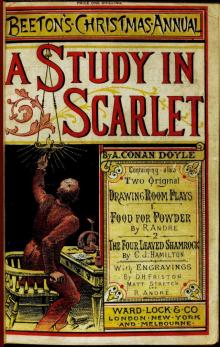 A Study in Scarlet
A Study in Scarlet The Firm of Girdlestone
The Firm of Girdlestone The Cabman's Story
The Cabman's Story The Adventures of Sherlock Holmes
The Adventures of Sherlock Holmes Round the Fire Stories
Round the Fire Stories His Last Bow: An Epilogue of Sherlock Holmes
His Last Bow: An Epilogue of Sherlock Holmes Micah Clarke
Micah Clarke The Exploits of Brigadier Gerard
The Exploits of Brigadier Gerard The Gully of Bluemansdyke, and Other stories
The Gully of Bluemansdyke, and Other stories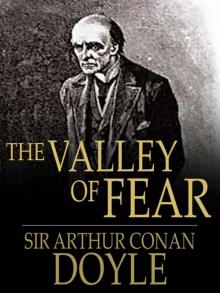 The Valley of Fear
The Valley of Fear The Last of the Legions and Other Tales of Long Ago
The Last of the Legions and Other Tales of Long Ago The Dealings of Captain Sharkey, and Other Tales of Pirates
The Dealings of Captain Sharkey, and Other Tales of Pirates The Hound of the Baskervilles
The Hound of the Baskervilles The Great Shadow and Other Napoleonic Tales
The Great Shadow and Other Napoleonic Tales The Adventure of the Dying Detective
The Adventure of the Dying Detective The Man from Archangel, and Other Tales of Adventure
The Man from Archangel, and Other Tales of Adventure The Poison Belt
The Poison Belt The Last Galley; Impressions and Tales
The Last Galley; Impressions and Tales The Adventure of Wisteria Lodge
The Adventure of Wisteria Lodge The White Company
The White Company The Mystery of Cloomber
The Mystery of Cloomber The Adventure of the Bruce-Partington Plans
The Adventure of the Bruce-Partington Plans The Adventure of the Cardboard Box
The Adventure of the Cardboard Box Danger! and Other Stories
Danger! and Other Stories Sir Nigel
Sir Nigel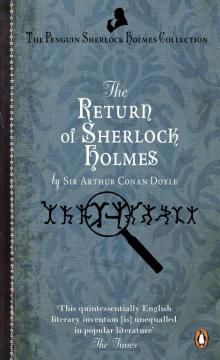 The Return of Sherlock Holmes
The Return of Sherlock Holmes The Adventure of the Devil's Foot
The Adventure of the Devil's Foot The Adventure of the Red Circle
The Adventure of the Red Circle The Memoirs of Sherlock Holmes
The Memoirs of Sherlock Holmes The Adventure of the Yellow Face
The Adventure of the Yellow Face The Adventure of the Norwood Builder
The Adventure of the Norwood Builder Mysteries of Sherlock Holmes
Mysteries of Sherlock Holmes The Adventure of the Missing Three-Quarter
The Adventure of the Missing Three-Quarter The Adventure of the Final Problem
The Adventure of the Final Problem A Scandal in Bohemia
A Scandal in Bohemia His Last Bow shssc-4
His Last Bow shssc-4 Beyond The City
Beyond The City The Adventure of the Gloria Scott
The Adventure of the Gloria Scott The Parasite
The Parasite The Land Of Mist pcs-3
The Land Of Mist pcs-3 The Adventure of the Musgrave Ritual
The Adventure of the Musgrave Ritual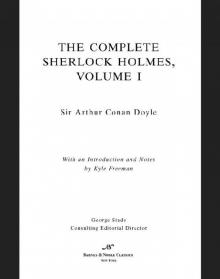 The Complete Sherlock Holmes, Volume I (Barnes & Noble Classics Series)
The Complete Sherlock Holmes, Volume I (Barnes & Noble Classics Series) The Adventure of the Stockbroker's Clerk
The Adventure of the Stockbroker's Clerk The Adventure of the Copper Beeches
The Adventure of the Copper Beeches The New Annotated Sherlock Holmes
The New Annotated Sherlock Holmes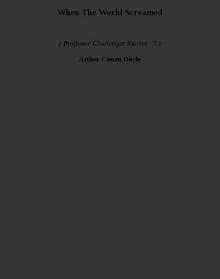 When The World Screamed pcs-5
When The World Screamed pcs-5 The Adventure of the Six Napoleons
The Adventure of the Six Napoleons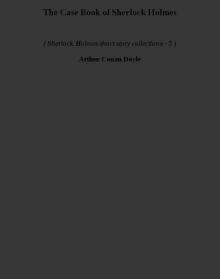 The Case Book of Sherlock Holmes shssc-5
The Case Book of Sherlock Holmes shssc-5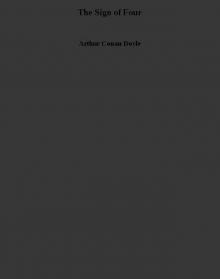 The Sign of Four
The Sign of Four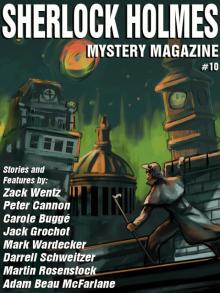 Sherlock Holmes Mystery Magazine #10
Sherlock Holmes Mystery Magazine #10 The Adventures of Brigadier Gerard
The Adventures of Brigadier Gerard The Adventure of the Second Stain
The Adventure of the Second Stain The Adventure of the Engineer's Thumb
The Adventure of the Engineer's Thumb The Mummy Megapack
The Mummy Megapack The Disintegration Machine pcs-4
The Disintegration Machine pcs-4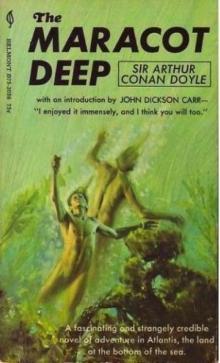 The Maracot Deep
The Maracot Deep The Five Orange Pips
The Five Orange Pips The Adventure of the Crooked Man
The Adventure of the Crooked Man The Adventure of the Blue Carbuncle
The Adventure of the Blue Carbuncle The Adventure of Silver Blaze
The Adventure of Silver Blaze The Adventure of the Solitary Cyclist
The Adventure of the Solitary Cyclist The Adventure of the Naval Treaty
The Adventure of the Naval Treaty Sherlock Holmes. The Complete Stories
Sherlock Holmes. The Complete Stories The Adventures of Sherlock Holmes (sherlock holmes)
The Adventures of Sherlock Holmes (sherlock holmes) The Adventure of the Empty House
The Adventure of the Empty House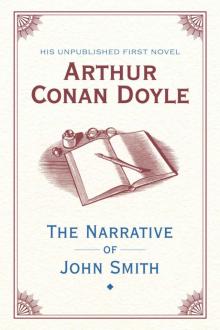 The Narrative of John Smith
The Narrative of John Smith The Return of Sherlock Holmes (sherlock holmes)
The Return of Sherlock Holmes (sherlock holmes) The New Revelation
The New Revelation A Study in Scarlet (sherlock holmes)
A Study in Scarlet (sherlock holmes) The Vital Message
The Vital Message Sherlock Holmes Complete Collection
Sherlock Holmes Complete Collection Round the Red Lamp
Round the Red Lamp The Boscombe Valley Mystery
The Boscombe Valley Mystery The Adventure of the Beryl Coronet
The Adventure of the Beryl Coronet The Refugees
The Refugees The Adventure of the Three Students.
The Adventure of the Three Students.